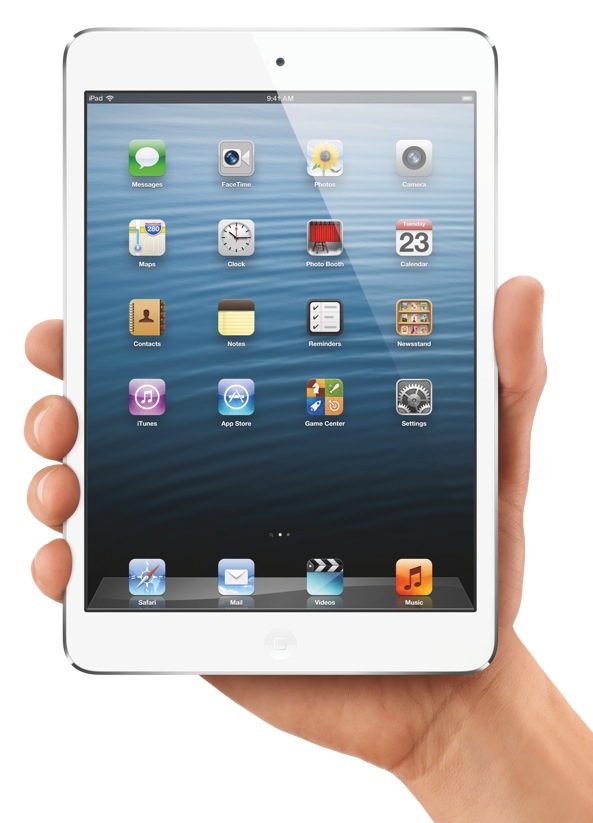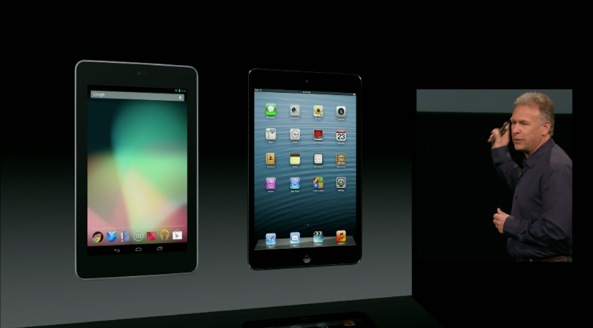The iPad mini’s 7.9-inch display is packed inside what The Verge’s Joshua Topolsky deemed “an incredibly thin and light design”. Part of that design: the skinnier side bezels that we first caught a glimpse of in early mockups. The problem is, there’s no way your thumb could rest on the side bezels without touching the display.
Enter Apple’s multitouch expertise. When Steve Jobs was unveiling the iPhone in January 2007, he praised its multitouch user interface for being able to detect and ignore unintended taps and swipes. “It’s super smart”, he quipped.
It’s all done in iOS and Apple had to refine its multitouch software so the iPad mini can automatically figure out when your thumb is simply resting on the display instead of interacting with the gizmo…
Apple notes as much on its product page for the device:
Rethinking the screen meant we also had to rethink the software behind it. iPad mini intelligently recognizes whether your thumb is simply resting on the display or whether you’re intentionally interacting with it.
It’s the kind of detail you’ll notice — by not noticing it. And it’s a great example of how Apple hardware and software work together to give you the best experience possible.
The Next Web also points us to Apple’s promo video starring design guru Jony Ive:
It became clear that we had to reduce the width of the borders so you can easily pick it up and use it with one hand.
Apple to my knowledge is the first tablet manufacturer to have successfully solved this problem of your fingers and narrower side bezels.
But why bother, you ask.
Because skinnier side bezels leave more room for the display without enlarging the chassis. Specifically, the skinner side bezels have enabled Apple’s engineers to pack a 29.6 square inch display area into a device roughly the same size of Google’s Nexus 7.
According to Apple’s press conference, this gives the iPad mini way more screen real estate than other seven-inchers, up to “an astonishing 67 percent more usable viewing area” when browsing the web.
See, it’s all intertwined.
One idea enables the other, but often times things seemingly simple on the surface require very complex engineering solutions.
I always tell people that this is the beauty of Apple.
They turn complex stuff into simple features folks get without even thinking of the immense technology that makes it happen.
Let’s just hope this ignoring of unintended touches on the sides works as advertised.
Even if it doesn’t, it’s just software so Apple could refine the algorithms managing accidental touches and push them to iPad minis via a software update.

